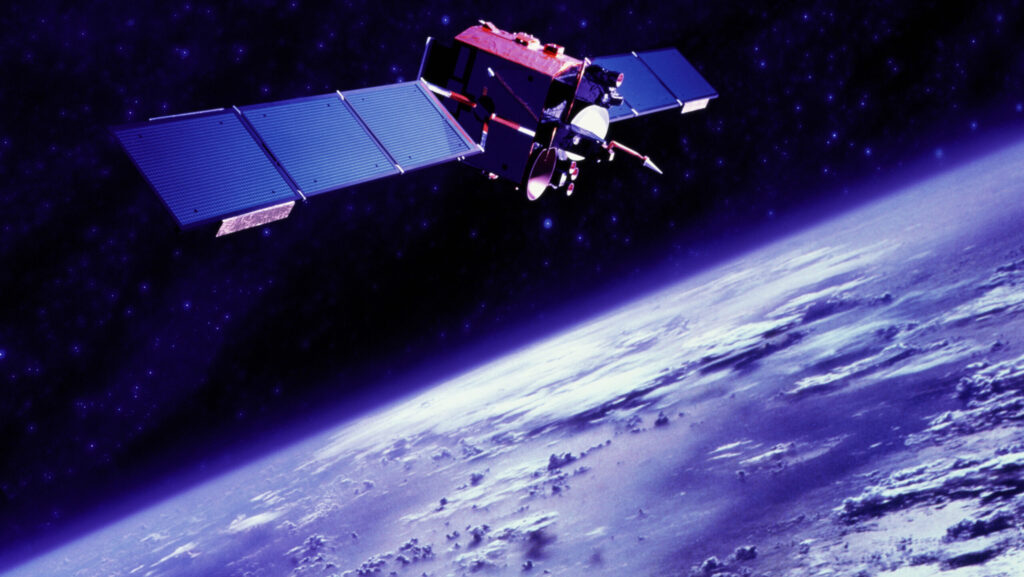World
France claims world’s first space-to-earth laser comms – Breaking Defense

Communications satellite orbiting above Earth (Getty Images/ Adastra)
PARIS — France’s Defense Innovation Agency (AID) together with a small French company, Cailabs, have succeeded in establishing a high-speed optical satellite communication between a nano-satellite in low orbit and a commercial optical ground station — a feat that they claim is a world first.
The French Defense Ministry said in a Sept. 10 statement that this project contributes to the objectives of the 2024-2030 military programming law, which provides for the country’s effort to up its military space game.
Satellite laser communications is an increasing area of interest for many governments as they seek to make the internet more resilient to attacks by bad actors, including those on subsea cables that currently carry most transatlantic internet traffic. Further, laser communications both between satellites and between satellites and ground stations enable the transmission of larger amounts of data in shorter time frames.
Jean-Francois Morizur, co-founder and CEO of Cailabs, which developed the optical ground station, told Breaking Defense in a telephone interview that “others have already demonstrated the proof of concept that a laser link can be established between a satellite and a ground-station but we are proposing an actual product that exists and can be bought off-the-shelf.”
Morizur revealed that the company has “already sold seven, at least seven we’re allowed to talk about, to South Korea, Australia, Greece, France and the United States.” He specified these ground stations had been bought both directly by the nations or else by companies which worked for governments.
The Cailabs ground station “is a white dome that measures around four metres in diameter with a large telescope that sticks out of it.” He explained that the technology lies in the way the light is treated once it’s entered the telescope.
The laser communication terminal aboard the nano-satellite, made by Unseenlabs, another small French company, also is an off-the-shelf product. These terminals “are sold by lots of companies and thanks to the US Space Development Agency, they are all required to be interoperable,” Morizur explained.
The Space Development Agency has developed standards for orbital laser communications it intends to use, but has published the standards in hopes of facilitating widespread use.
The French experiment was launched at the end of 2023 by AID with the launch of the Keraunos satellite and the aim of testing high-speed optical communications based on the innovative technology developed by Cailabs. AID provided €5.5 million ($6.1 million) to fund the Keraunos project which also involved Unseenlabs, another startup based in Rennes, western France.
The team was able to establish a stable laser link over several minutes and thereby not only track the nano-satellite flying in low Earth orbit from the optical ground station, but also receive data sent from the satellite.
In a statement, the Defense Ministry explained that “the advantages of the optical link over the usual radio link are its speed, discretion and independence from regulations that coordinate the use of radio waves. Even if this optical link can sometimes be perturbed by atmospheric turbulence, the Keraunos satellite is able to circumvent them in order to achieve optimum transmission quality.”
It adds that “the modern and agile architecture of Unseenlabs’ nano-satellites allows for the laser communication terminal to be integrated within the very short timespan imposed by the ‘New Space’ tempo.” (“New Space” is a term referring to the growing ecosystem of private space firms kicking out innovative products at a rapid pace.)
The Defense Ministry says the successful outcome of the Keranos project “makes it possible to use space-based laser communications on mobile, land-based, naval or airborne platforms,” adding that “this system could be integrated into the Ministry of Defense’s future satellite systems.”
Jonathan Galic, co-founder and new technologies director at Unseenlabs, says in the ministerial statement that “this success reflects the capacity of Unseenlabs to rapidly put into orbit a perfectly functional, complex system. The combination of the performances of (our) satellites with the optical innovations of Cailabs opens the way to faster and more secure communications.”





.jpg)

